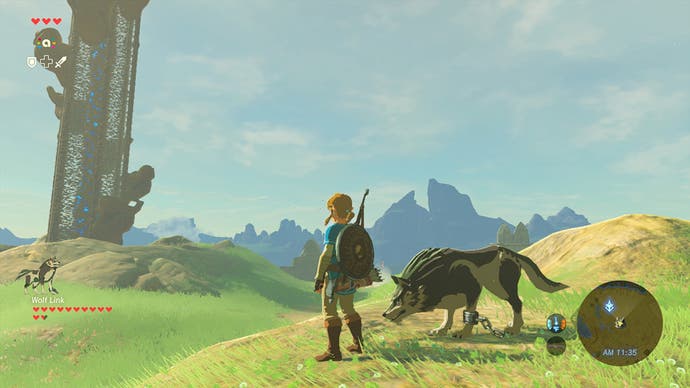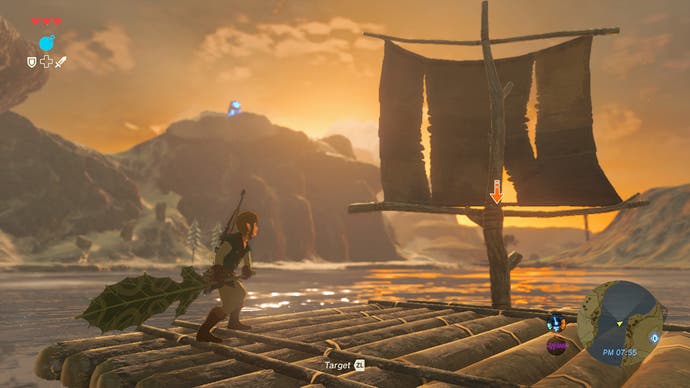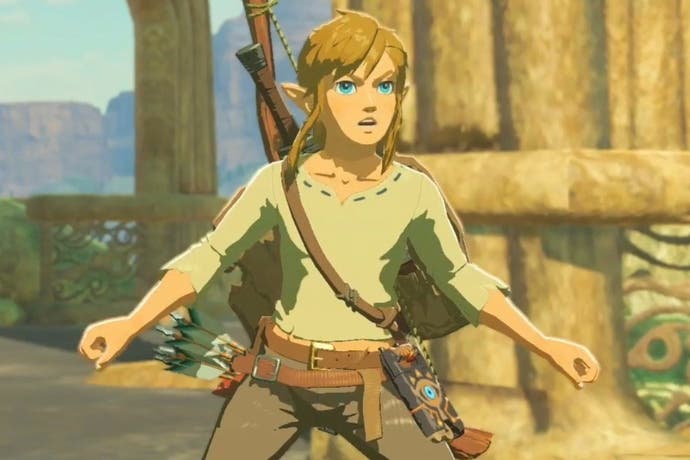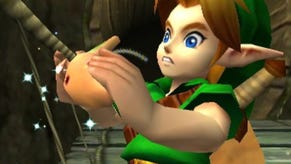Zelda: Breath of the Wild pushes Wii U hardware to the limit
Digital Foundry goes hands-on with Nintendo's most technologically ambitious project to date.
Drawing perhaps the longest queue in E3 history, it's fair to say that The Legend of Zelda - Breath of the Wild was quite the crowd pleaser at the show last week. It's no surprise either - fans have been patiently awaiting the release of a new Zelda title on Wii U for years and having spent hands-on time with the game, not to mention poring over all available media, the reasons behind the lengthy development cycle become clear.
Simply put - Breath of the Wild might just be Nintendo's most ambitious in-house game to date. It's a systems-driven open world game that manages to sidestep many of the weaknesses that often dull this kind of experience on rival titles, while presenting players with a level of freedom never before seen in a Zelda title. Having suffered the effects of 'open world fatigue' as of late, we certainly approached the game with some trepidation but it's clear that Nintendo is taking a smart approach to design here.
Right off the bat we were impressed with the introduction - Link wakes up in a strange cavern, grabs his gear, and heads off into the great outdoors. With typical 3D Zelda titles having become known for bombarding players with countless tutorials, this cold open feels fresh. In many ways, this feels like a true sequel to the original The Legend of Zelda on the NES. The original game dropped players into the world and simply let them run free. This new game does that as well, returning a sense of freedom and exploration that was lacking in most other games in the series.
Rather than presenting breadcrumb trails and obvious waypoints, Zelda gently encourages players to explore and experiment with its systems. After a few minutes you'll discover a robust physics engine, a fire propagation system, temperature and noise mechanics, and the ability to traverse the world in a multitude of ways - you can parasail off a cliff, surf on your shield, hijack a horse and climb every surface in the world. All of these systems are tied together organically while encouraging experimentation. This all takes place against a beautiful, atmospheric world that feels more like something you'd expect from Team Ico rather than Nintendo.
This is supported by an impressive engine that supports a massive world alongside a series of visual techniques that we don't often see on Wii U. While things such as ambient occlusion, shadow maps, reflections, and interactive grass are certainly nothing new, it's not often that we see all of these together on a Wii U title at such a large scale. Only Xenoblade Chronicles X comes close to matching Zelda, which makes sense considering that its creator, Monolith Soft, is co-developing Breath of the Wild alongside Nintendo itself.
Of course, all of these techniques do not come free. It's clear that the Wii U hardware can't always keep up with what's happening on-screen. As players engage enemies, start fires, or trigger the physics engine, the game starts to drop frames. In the E3 demo, we often see the frame-rate drop below the 30fps target with the lowest results coming in around 20fps. Even basically exploration suffers temporary frame-rate drops as the engine struggles to cope with the scale of the technological ambition Nintendo is aiming for. Alpha effects appear to be rendered at half-resolution in order to ease the load, but we'll be interested to see whether other compromises or trades are attempted in order to lock to the target 30fps frame-rate.

As this is Wii U, it should be no surprise that Zelda operates at 1280x720 with little to no edge-smoothing. While screenshots definitely show very limited smoothing, our impression while playing the game was less favorable - though this is due in part to the poorly calibrated televisions used to demonstrate the game. This is exacerbated by the reliance on trilinear texture filtering, which - at its worst - can reduce texture quality to a blurry soup at even a moderate angle.
Obviously, there are some things to keep in mind when assessing the current situation. First and foremost, we're still more than nine months away from release, leaving plenty of time for improvement. While Nintendo is known for optimising its tech early in development, this is a project much larger in scope than EAD is used to tackling so we're hopeful that the final product will see improvement. What we're presenting here is just a snapshot of the game in progress, after all.
Beyond that, the hardware design of the Wii U itself, with its limited CPU power, is not well suited for this type of game. Keeping this in mind, what Nintendo has achieved here on the Wii U, even in this pre-release form, is incredibly impressive. Last generation open world games such as The Elder Scrolls: Skyrim, Saint's Row 4 and Grand Theft Auto 5 suffer from much more serious performance drops in comparison to what we've seen here. That we're still some way out from launch and performance is already in better shape than these titles is a good thing.

We also cannot ignore the NX factor. Just what the NX actually is remains a mystery to us but, if rumours are to be believed, we could be looking at a nice boost in power from the Wii U. This could mean a higher resolution, better texture filtering, a smoother frame-rate and less obvious LOD popping. After all, the art direction is remarkable, and simply cleaning up these technical limitations could have a transformative effect on the game - almost like an HD remaster, if you like.
For us, though, much of the excitement centres on the game itself. Zelda focuses on exploration and experimentation in a way that few other modern open games can. In many games, open-ended map design has become so sprawling and complex at this point that mini-maps and objective markers have become a necessity. What separates Zelda from the pack lies in its ease of navigation - the map is laid out so clearly that it feels entirely possible to navigate the world by eye rather than relying on the aforementioned aids. It's this sense of discovery that makes the likes of Dark Souls so captivating and it's precisely where we feel Zelda has a chance to shine.
Breath of the Wild isn't scheduled for release until 2017, but what's clear is that this E3 code is just a small snapshot of the final product - a taster that leaves you hungry for more. Already highly impressive, we can look forward to optimisation improvements, new areas of the game perhaps showcasing new technology, plus a potentially transformative experience with the title running on next-gen NX hardware. What we've experienced is just the opening chapter from the latest episode of the Legend of Zelda saga, and it's left us hungry for more.









